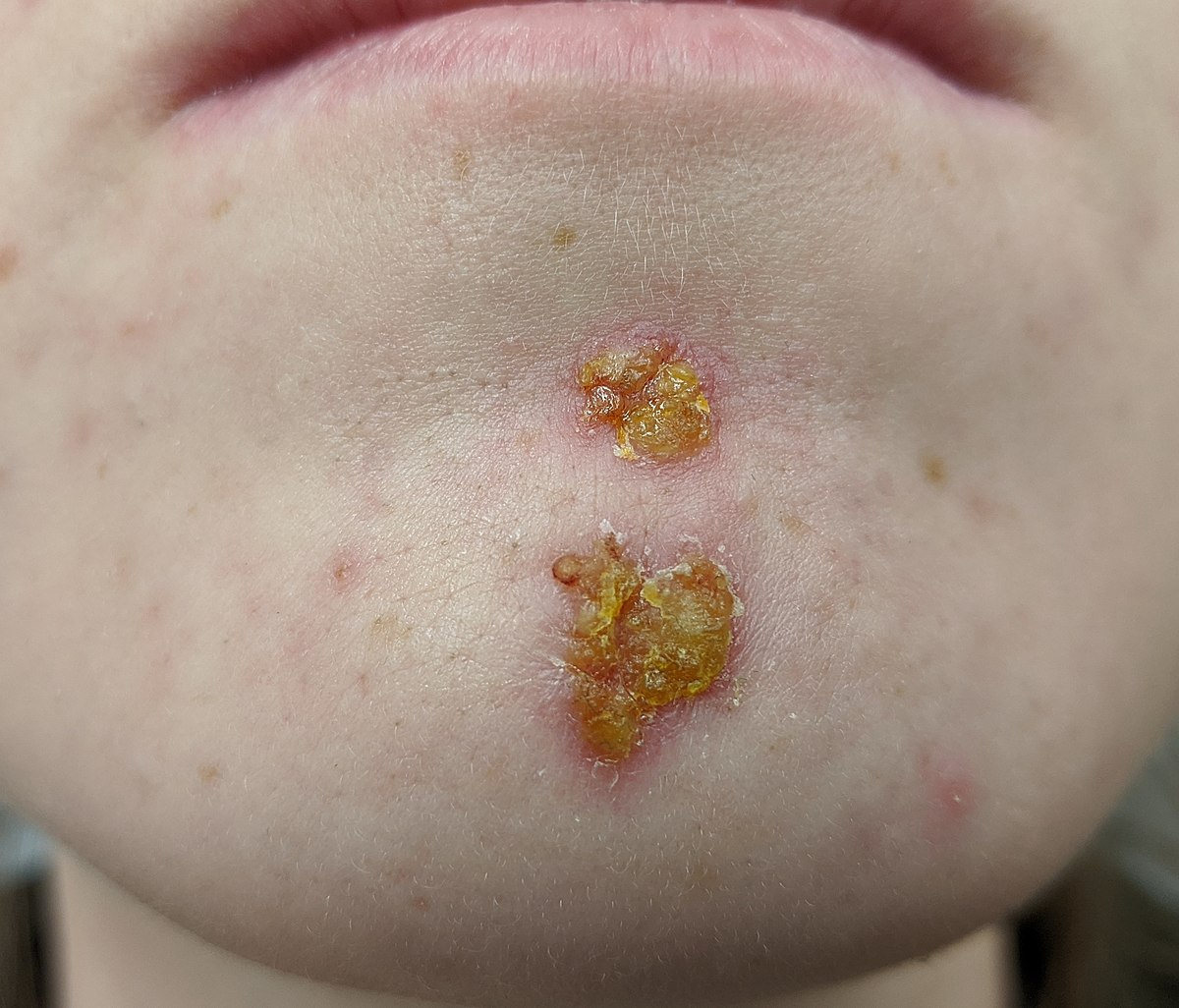Written by Dr. Ringpfeil

Impetigo is a bacterial infection of the skin caused by Staphylococcus aureus, group A Streptococcus, or a combination of both bacteria. Staphylococcus aureus is the most common culprit. The infection can occur as a primary infection, developing on minor breaks in the skin, or as a secondary infection to another inflammatory skin condition. Common inflammatory skin conditions that can lead to impetigo include atopic dermatitis, contact dermatitis, and, less commonly, psoriasis.
When the skin is chronically scratched, it becomes susceptible to bacterial invasion. There are two types of impetigo: blistering (bullous) and non-blistering. The non-blistering type is more prevalent and is characterized by the presence of honey-colored crusts. It is commonly observed on the face but can occur on any part of the body. Bullous impetigo, characterized by blisters on normal-looking skin, is primarily seen in children. Both forms are contagious and can spread rapidly through skin-to-skin contact.
Impetigo can usually be diagnosed based on its characteristic appearance, but a bacterial culture may be performed if necessary to confirm the diagnosis. In older individuals, a biopsy of bullous impetigo may be required to differentiate it from other blistering diseases.
Topical treatment involves cleansing the affected area multiple times a day with an antibacterial cleanser. In children, a mild antibacterial cleanser like Cetaphil antibacterial is preferred. For localized disease, this should be followed by the application of petrolatum or zinc paste, along with over-the-counter or prescription-strength topical antibiotics, several times daily.
If the infection is widespread, oral antibiotics may be necessary. Due to its contagious nature, individuals with impetigo should avoid skin-to-skin contact with others and refrain from sharing personal hygiene items such as razors and towels.
Impetigo is typically asymptomatic but may occasionally cause itching. It is not painful. Treatment usually leads to the resolution of the rash within a few days.
Primary infection can be prevented by avoiding close contact with individuals who have impetigo. Sharing towels, washcloths, clothing, bed linens, and razors should be avoided. Secondary impetigo can be prevented by managing underlying skin conditions such as atopic dermatitis and psoriasis and avoiding excessive scratching.
People who experience recurrent episodes of impetigo may be carriers of Staphylococcus aureus bacteria in their nostrils or skin folds. Removing the bacteria from these areas may help prevent future outbreaks. This can be achieved by applying mupirocin cream to the inner nares for a period of 7 to 10 days.
Patients ask Dr. Ringpfeil answers
Please feel free to use this form to ask our dermatologists questions about this treatment.